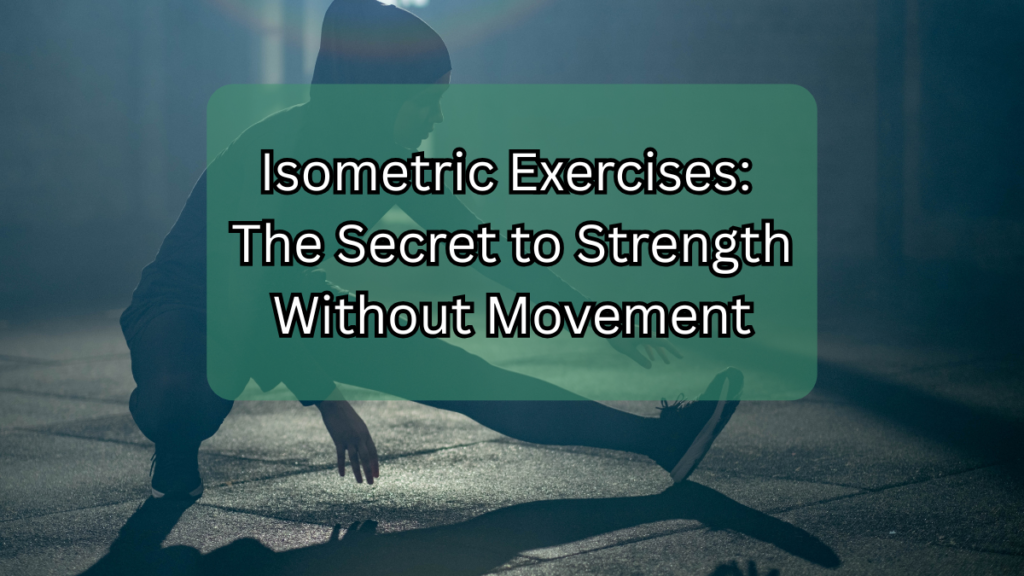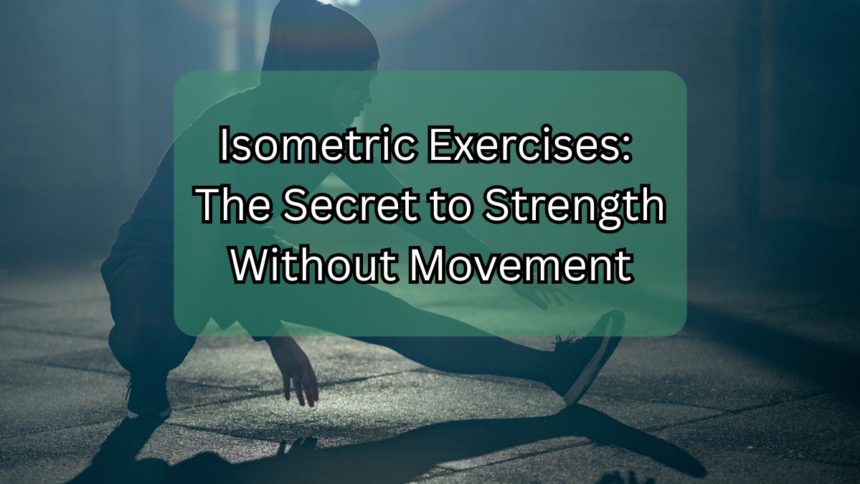Isometric Exercises
Have you ever held a plank until your muscles trembled or pressed your palms together with all your might? If so, you’ve already experienced isometric exercises—a powerful yet often overlooked form of strength training. Unlike traditional workouts that involve movement (like squats or bicep curls), isometric exercises focus on holding a static position, engaging muscles without any visible motion.
But how can staying still build strength? And why should you incorporate isometric exercises into your fitness routine? In this post, we’ll dive deep into the science behind isometric training, its benefits, and practical tips to maximize your results.

What Are Isometric Exercises?
Isometric exercises involve muscle contraction without joint movement. Think of pushing against an immovable object—your muscles are working hard, but nothing is moving. Common examples include:
- Plank (core engagement)
- Wall sit (quad and glute activation)
- Static lunge hold (leg strength)
- Hand grip squeeze (forearm and grip strength)
These exercises are low-impact, making them ideal for injury recovery, joint pain management, or even a quick office workout.
The Science Behind Isometric Strength Training
Research shows that isometric exercises can:
✅ Increase muscle endurance – Holding a position for extended periods improves stamina.
✅ Enhance joint stability – Strengthens tendons and ligaments, reducing injury risk.
✅ Boost strength at specific angles – Ideal for overcoming strength plateaus.
✅ Lower blood pressure – Studies suggest isometric training may improve cardiovascular health (source).
Unlike dynamic exercises, isometrics maximize muscle fiber recruitment in a fixed position, making them incredibly efficient for targeted strength gains.
Video Credits
Top Benefits of Isometric Exercises
1. No Equipment Needed
You don’t need weights or machines—just your body (or a wall/floor). Perfect for home workouts or travel!
2. Joint-Friendly & Safe for Rehabilitation
Since there’s no movement, isometrics reduce joint stress, making them great for arthritis or post-injury recovery.
3. Time-Efficient Strength Gains
Even 10-30 seconds of intense holds can trigger muscle growth and strength improvements.
4. Improved Mind-Muscle Connection
Holding a position forces you to focus on muscle engagement, enhancing control and coordination.
5 Effective Isometric Exercises to Try
1. Plank (Core & Full-Body Strength)
- Hold a push-up position on elbows, keeping your body straight.
- Engage your core and hold for 20-60 seconds.
2. Wall Sit (Leg Endurance)
- Slide your back down a wall until thighs are parallel to the floor.
- Hold for 30 seconds to 2 minutes.
3. Glute Bridge Hold (Hip & Glute Strength)
- Lift your hips into a bridge position and squeeze your glutes.
- Hold for 20-45 seconds.
4. Static Push-Up Hold (Chest & Arm Strength)
- Lower into a push-up and pause halfway.
- Hold for 10-30 seconds.
5. Towel Grip Crush (Forearm & Grip Strength)
- Roll a towel and squeeze as hard as possible for 10-20 seconds.
Pro Tips for Maximizing Isometric Training
🔹 Breathe steadily – Avoid holding your breath to prevent blood pressure spikes.
🔹 Progressive overload – Increase hold time or resistance gradually.
🔹 Combine with dynamic movements – Pair isometrics with traditional exercises for balanced strength.
🔹 Focus on form – Poor alignment reduces effectiveness and increases injury risk.
Common Misconceptions About Isometric Exercises
❌ “They don’t build muscle.” – False! Isometrics stimulate muscle growth, especially when held under tension.
❌ “They’re only for beginners.” – Advanced athletes use them for strength plateaus and injury prevention.
❌ “You don’t burn calories.” – While not as cardio-intensive, they still boost metabolism.
Final Thoughts: Should You Try Isometric Training?
If you want strength without movement, isometric exercises are a game-changer. They’re versatile, joint-friendly, and highly effective for building endurance and stability. Whether you’re rehabbing an injury, breaking through a plateau, or just looking for a quick workout, isometrics deserve a spot in your routine.
Ready to give it a try? Start with a 30-second plank or wall sit today and feel the burn!
💬 Have you tried isometric exercises? Share your favorite static hold in the comments!
📩 Subscribe for more fitness tips delivered to your inbox.
🔗 Share this post with a friend who needs a no-equipment workout!











